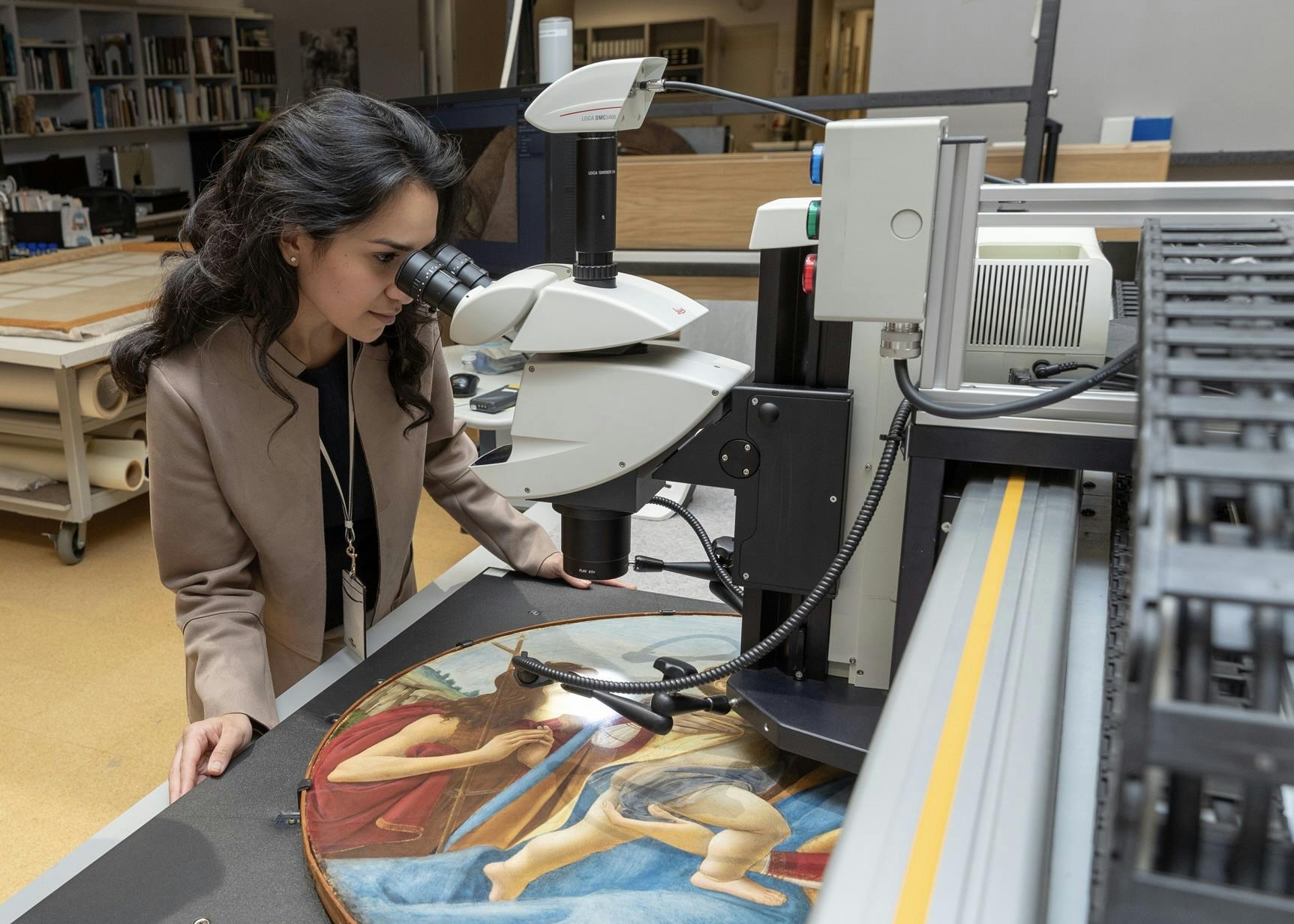Conservation

Members of the conservation department care for and treat the museum’s celebrated art collection “for the benefit of all the people forever.” Located in the Eric T. and Jane Baker Nord Family Conservation Suite, a beautiful, state-of-the-art 18,000-square-foot facility in the Rafael Viñoly-designed east wing of the museum, the department comprises nine separate workspaces joined by an internal corridor, facilitating cross-disciplinary collaboration that benefits the art being cared for. The internationally trained conservation staff members are experts in Asian paintings, frames, objects, paper, preventive conservation, photographs, textiles, and paintings. Additionally, the department has a dedicated photographer and studio specializing in technical imaging to assist in the documentation of conservation processes and examinations. The conservation staff adheres to the American Institute for Conservation’s Code of Ethics.
When the department was established in 1958, it was quickly recognized as operating at a high level of excellence and has been expanded over the decades to better mirror the collection. Today, conservators advise on acquisitions, display, loans, and storage and develop and execute treatments to improve the physical stability and interpretation of artworks. Expert technicians prepare art for display and storage following current conservation protocols. A core activity of the department is the examination and research of artworks, which is facilitated by cutting edge technologies, including digital X-radiography capabilities, handheld X-ray fluorescence spectroscopy, multimodal imaging, Fourier-transform infrared spectroscopy, and more. Conservation staff members publish and lecture internationally, engaging with a range of audiences from elementary schools to professional peers. An important focus of the department is training and mentoring the next generation of conservators, and so the department offers multiple paid internships and fellowships, including short micro-internships designed for undergraduates eager to learn more about conservation and museums. CMA conservators also enjoy opportunities to collaborate with the faculty and graduate students in the joint program in art history between the museum and Case Western Reserve University (CWRU), as well as CWRU students from materials science, engineering, and other disciplines. The conservation staff also collaborates with colleagues at Cleveland Clinic and many other Cleveland-area institutions, vastly expanding the department’s technical and expert capabilities.
Follow along with #CMAConservation on the museum’s Instagram and Facebook accounts and look for conservation-related posts on the museum’s blog, The Thinker!
Asian Paintings Conservation
Only six institutions in North America have expertise in East Asian paintings conservation, and the Cleveland Museum of Art is one of them. Constructed in 2008, the museum’s Asian paintings conservation lab, which includes the June and Simon K.C. Li Center for Chinese Paintings Conservation, is responsible for examining, treating, and preserving the CMA’s renowned collection of Chinese, Japanese, Korean, and Himalayan paintings.
Asian paintings conservators at work in the Asian paintings conservation lab
Objects Conservation
The objects conservation lab at the Cleveland Museum of Art is dedicated to the preservation, study, and treatment of three-dimensional art and artifacts from across the museum’s curatorial areas, ensuring that these objects remain accessible and available for current and future generations of visitors.
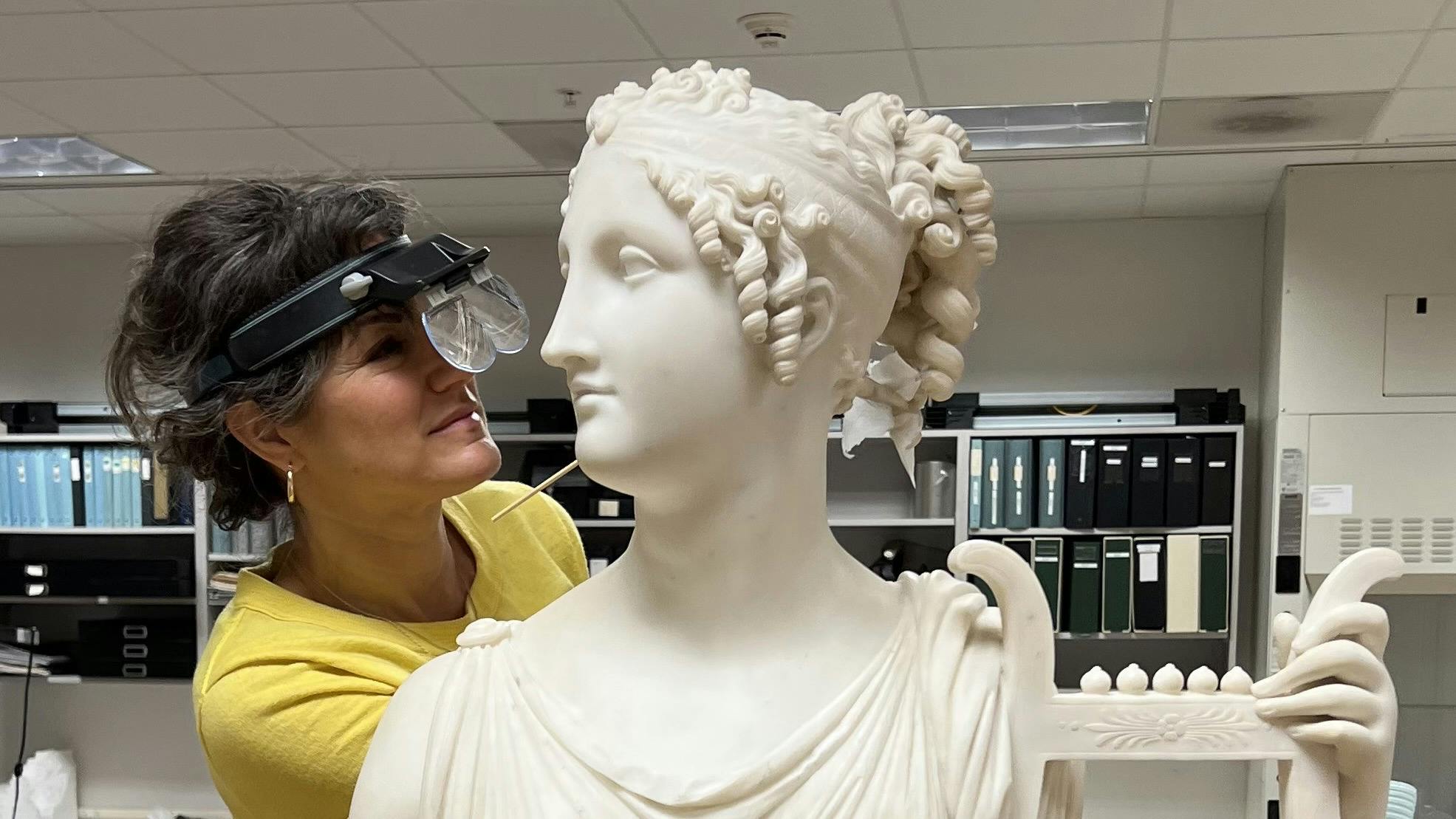
Beth Edelstein, head of objects conservation, treating Terpsichore Lyran (Muse of Lyric Poetry)
Paintings Conservation
The paintings conservation lab examines, analyzes, and conserves paintings ranging from the medieval to the contemporary period.

Dean Yoder, senior conservator of paintings and head of paintings conservation, inpainting losses on Venus Discovering the Dead Adonis
Paper Conservation
With ample natural light and specialized tools, furnishings, and equipment, the CMA’s paper conservation lab is ideally suited for caring for the museum’s encyclopedic holdings of works of art on paper and related materials.
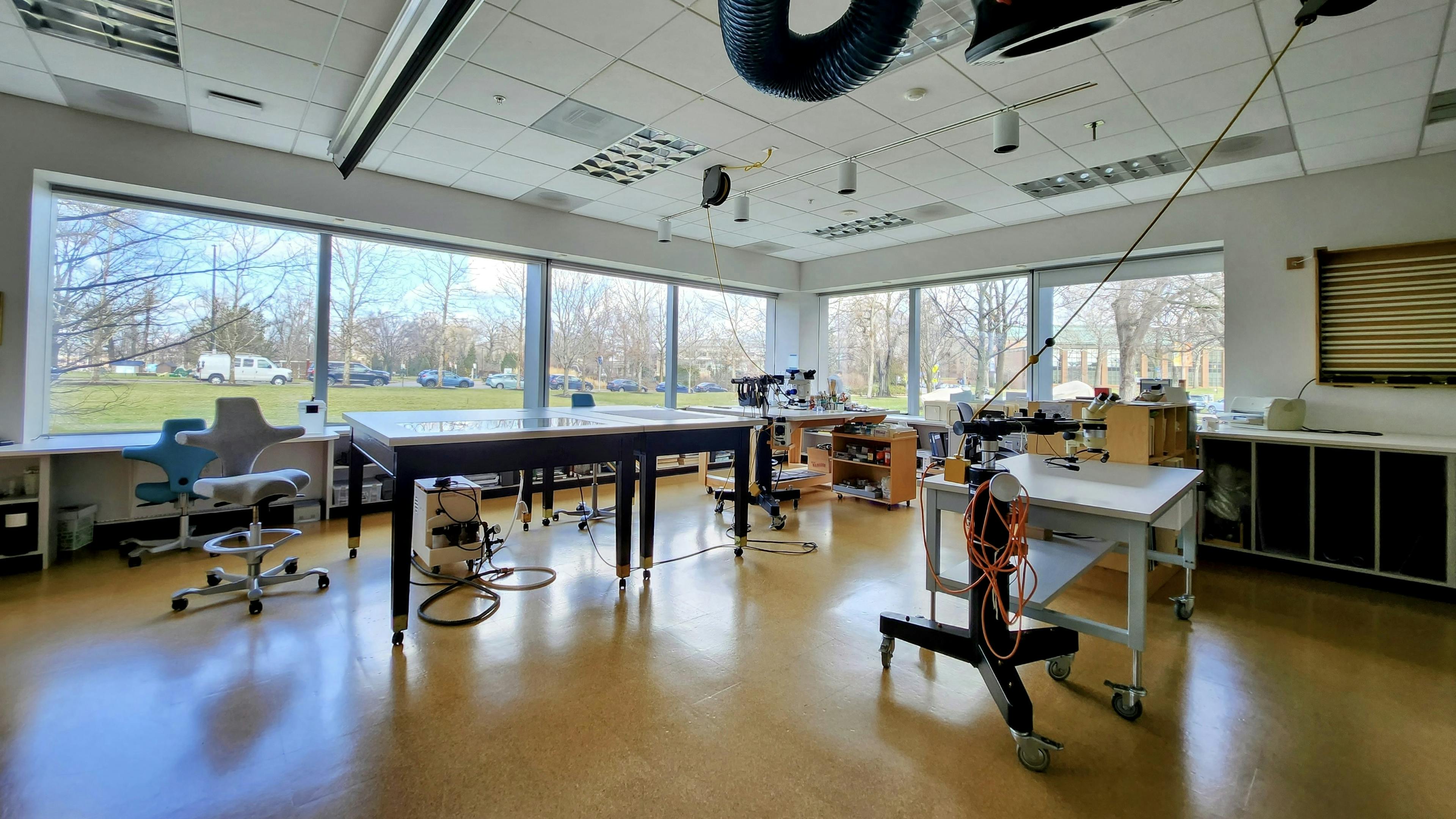
Inside the paper conservation lab at the CMA
Preventive Conservation
Preventive conservation is a team effort. At the Cleveland Museum of Art, colleagues from conservation, collections management, design, security, and facilities all work together to make sure that the artworks housed at the CMA remain safe and stable so they can be enjoyed by the visiting public.
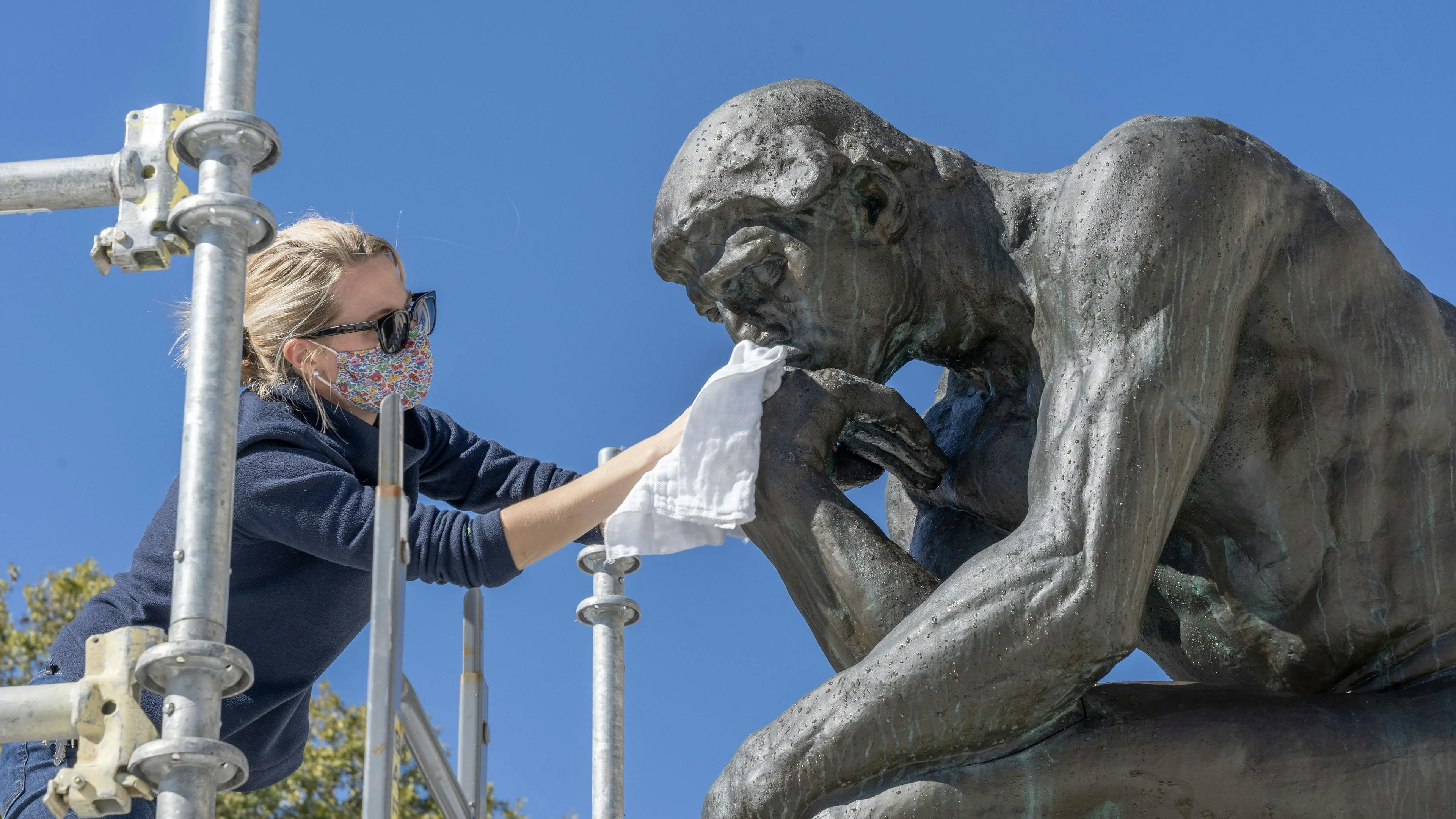
Laura Resch, assistant preventive conservator, dries Auguste Rodin’s The Thinker during annual outdoor sculpture cleaning
Technical Preparatory Labs
Every frame, photograph, print, drawing, textile, and manuscript in the museum is prepared to be displayed for in-house exhibition, loan, and storage within one of the CMA’s two technical preparatory labs.
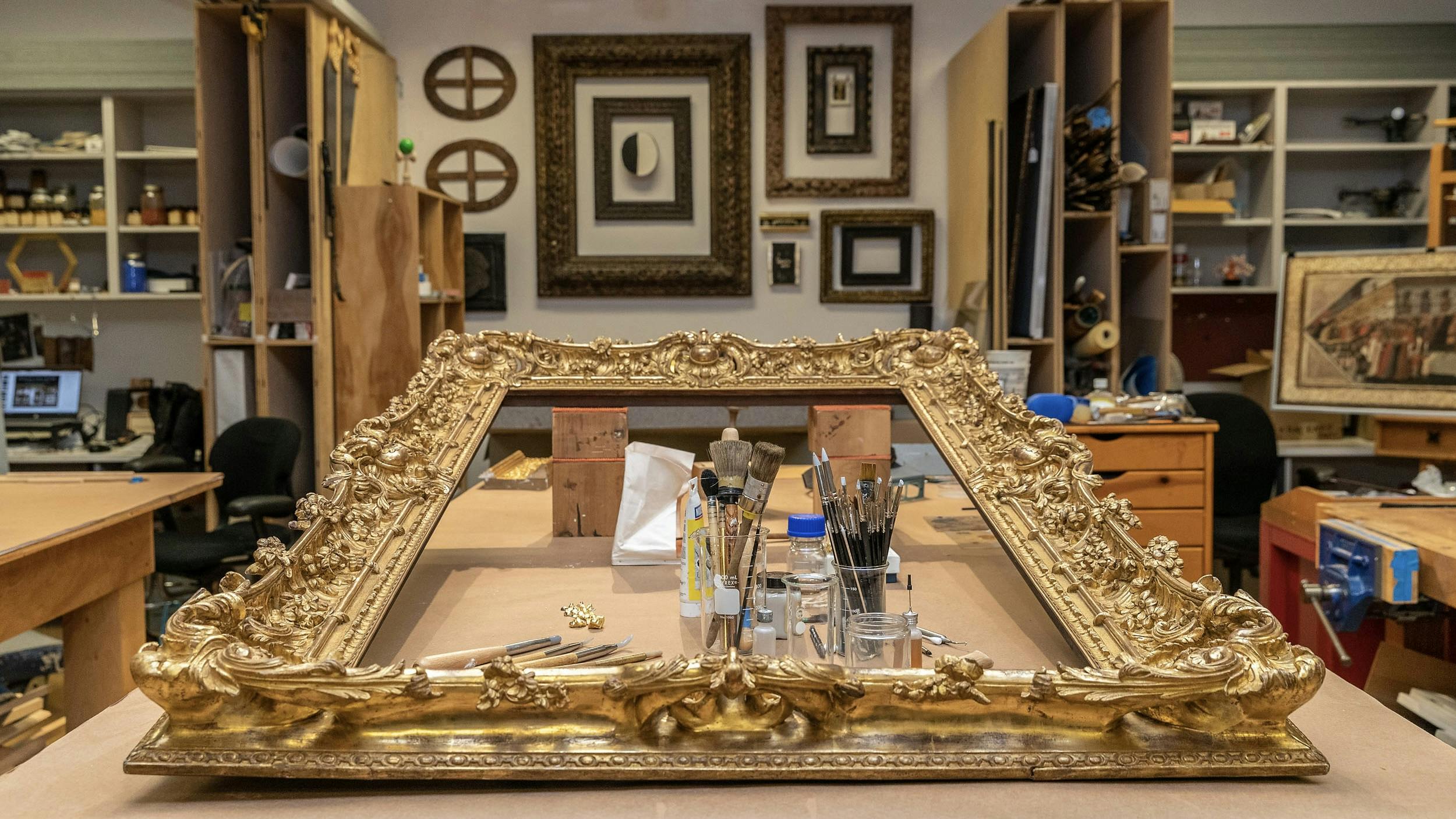
Gilded frame undergoing treatment in the frames lab
Textile Conservation
The textile conservation lab is responsible for the preservation, storage, treatment, analysis, and mounting for display of textiles in the CMA’s collection.
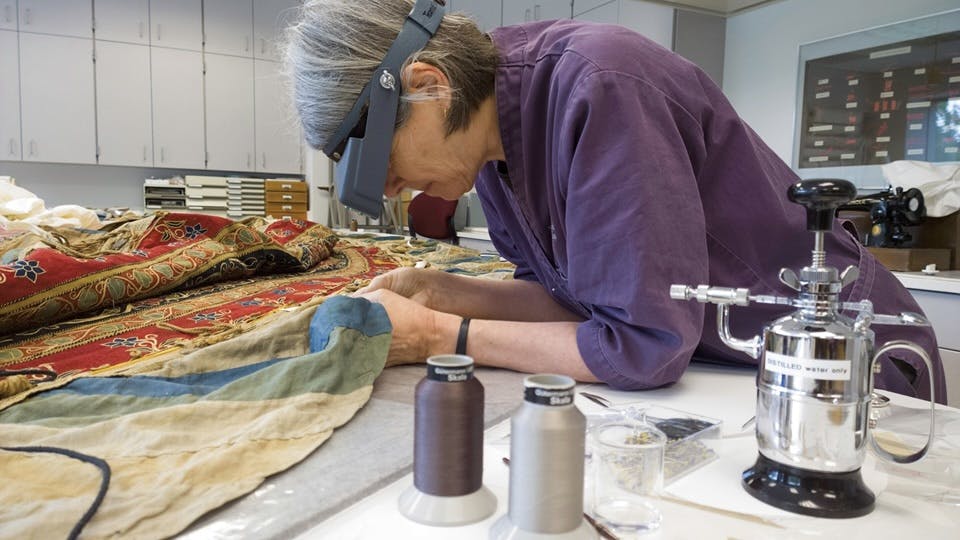
Robin Hanson, conservator of textiles, working on the Royal Round Tent made for Muhammed Shah
CMA Conservation in the News
- (opens in new tab)
In our Hands: Chinese Painting Conservators in US Museums
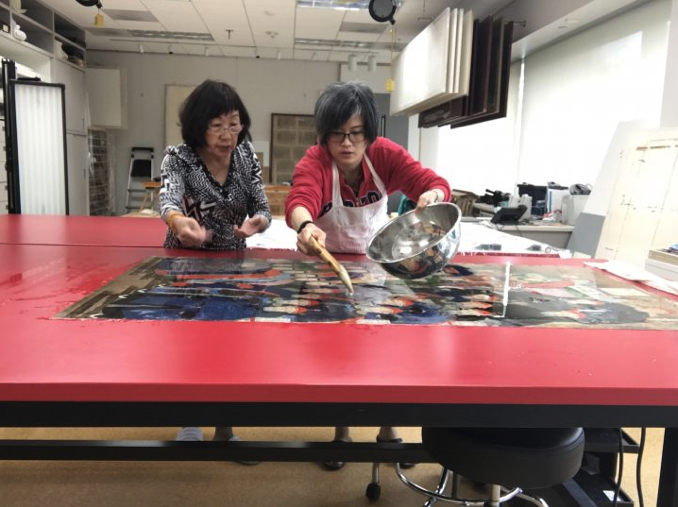
- (opens in new tab)
The Conservators’ Code of Ethics
WKYC Growing STEM Series
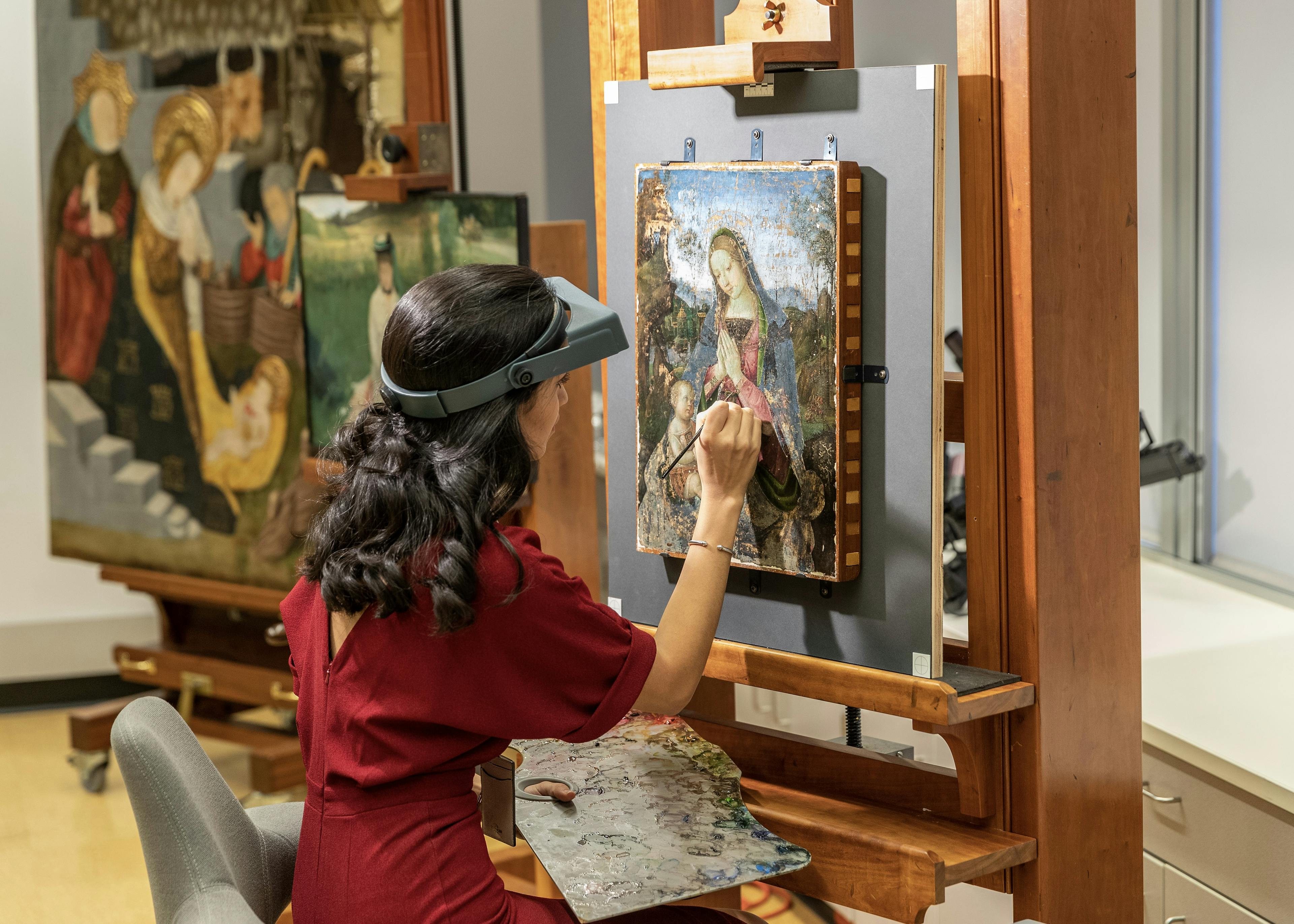
- (opens in new tab)
The Art of Preserving a Painting
Conserving CMA's Venus Discovering the Dead Adonis

- (opens in new tab)
Microclimates and Masterpieces
WKYC Growing STEM Series

Need help for an object of your own?
Use the American Institute for Conservation’s (AIC) “Find a Professional” tool to locate a professionally trained conservator in your area.
